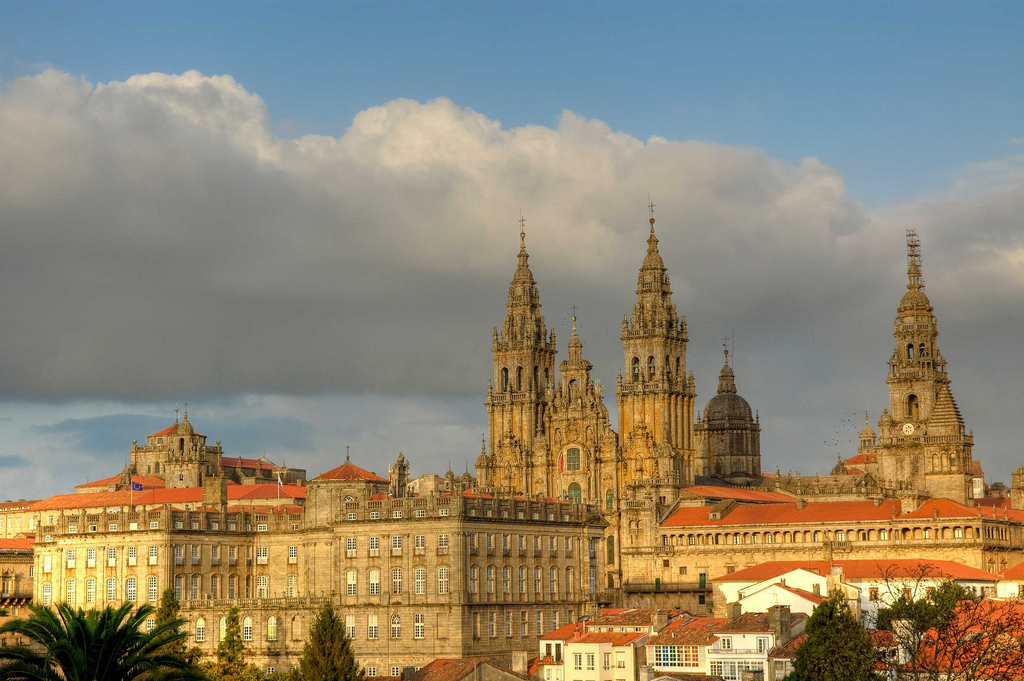The name of this Galician city Compostela comes from the Latin words ‘campus stellae’ which means ‘field of the star’. Consisting of the strong grey granite and mica, the area has what could be considered an un-Spain-like climate producing continual showers.
The local university keeps the streets and the bars of Santiago de Compostela full of life and continues to grow enormously. What brings most newcomers, however, and where all paths seem to lead is to the cathedral of Santiago. The great cathedral is the goal and the end of the long pilgrimage, ‘El Camino de Santiago’.
Pilgrims enter through the ‘Porto de Camiño’, where they can explore baroque and Romanesque churches and monasteries. They pass through enormous arches and arcades with many vibrant shops along the way. Here you can also find the ‘Palacio de Fonseca’, a university building with a Renaissance façade.
The cathedral of Santiago has a baroque façade and elaborate twin towers. There is a double ramp baroque intertwined stairway in the entrance leading to a crypt beneath. On the inside of the cathedral there is much carved imagery. In the center lies the Christ with his wounded hands accompanied by St. James and ‘master Mateo’. People bump there head against his head to gain wisdom.
There are around 200 figures including images of the apocalypse, prophets, and hell. There is a gallery running around the cathedral. Above the alter is an image of St. James, where you may climb up and kiss the shell on the back of his gown, as a final ‘amen’ to the journey.
References: Explore Spain Map and Guide Pack, Northern Spain Cadogan Guides



